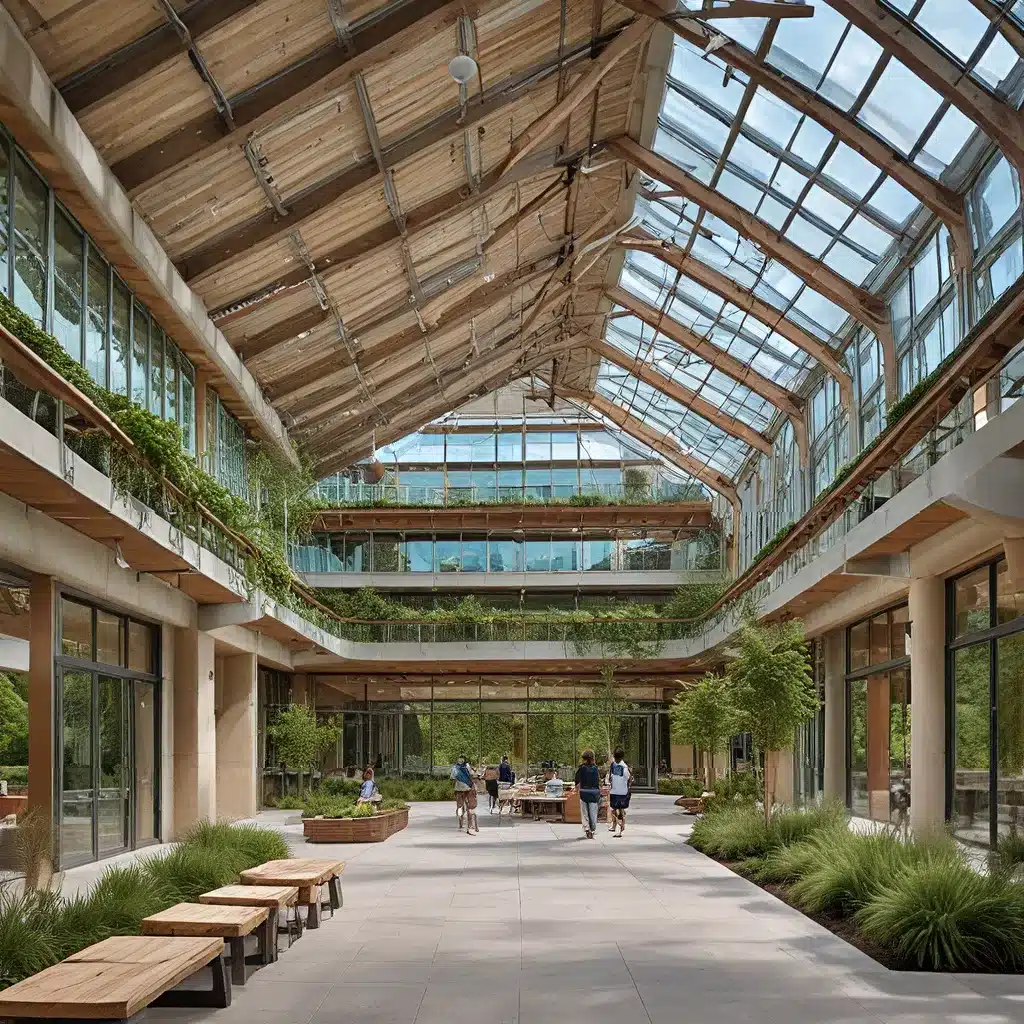
As an eco-conscious individual, I’ve always been fascinated by the world of sustainable architecture and green building design. It’s amazing to see how far the industry has come in recent years, with innovative solutions that push the boundaries of environmental responsibility.
The Rise of Green Building Standards and Certifications
Buildings have a significant impact on the environment, consuming vast amounts of energy, water, and raw materials while generating waste and emissions. This realization has prompted the creation of various green building standards, certifications, and rating systems aimed at mitigating the environmental toll of the built environment.
The pioneering Building Research Establishments Environmental Assessment Method (BREEAM), launched in the UK, was the world’s first green building rating system. Not long after, the U.S. Green Building Council (USGBC) developed its own comprehensive framework, the Leadership in Energy and Environmental Design (LEED) program, which has since become the most widely used green building certification globally.
As the demand for sustainable design grew, other rating systems emerged, such as Green Globes and the International Green Construction Code (IgCC). These programs offer different approaches, with some focusing on prescriptive requirements and others emphasizing performance-based standards. The variety of options can be both a blessing and a curse, as it provides flexibility but can also make it challenging to determine the most appropriate system for a particular project.
The Evolution of Green Building Codes and Standards
The push towards sustainable design has also led to the development of green building codes, which are mandatory and aim to drive the industry towards higher levels of environmental performance. The International Green Construction Code (IgCC), for example, was created with the intention of being adopted by governments at all levels as a tool to advance green building beyond the market segment transformed by voluntary rating systems.
Similarly, the California Green Building Standards Code (CALGreen) was the first statewide green building code in the U.S., designed to promote environmentally responsible, cost-effective, and healthier buildings. These codes often incorporate elements from voluntary rating systems, ensuring a more comprehensive and enforceable approach to sustainability.
Understanding the Landscape of Green Product Certifications
In addition to building-level certifications, the green building movement has also given rise to a proliferation of product-level certifications and labels. These aim to validate the environmental attributes of individual building materials and components, providing valuable information to designers, specifiers, and consumers.
Some of the most recognized green product certifications include ENERGY STAR, WaterSense, Forest Stewardship Council (FSC), Green Seal, and the Cradle to Cradle Certified program. These third-party labels assess a wide range of factors, from energy efficiency and water usage to material composition and chemical emissions.
Emerging certifications, such as Environmental Product Declarations (EPDs), Health Product Declarations (HPDs), and the Declare label, are also gaining traction. These focus on providing transparent, life-cycle-based information about a product’s environmental and health impacts, empowering project teams to make more informed material selections.
Navigating the Complexities of Green Building Certification
With so many options available, choosing the right green building certification system for a project can be a daunting task. Each program has its unique approach, requirements, and areas of emphasis, which must be carefully evaluated to align with the project’s goals and constraints.
LEED, for example, is a comprehensive, point-based system that covers a broad range of sustainability categories, from energy and water efficiency to materials and indoor environmental quality. BREEAM, on the other hand, takes a more prescriptive approach with mandatory and optional credits, while Green Globes allows for more flexibility in meeting its standards.
Beyond the traditional building-level certifications, new programs like WELL, Fitwel, and SITES are expanding the scope of green building to focus more on occupant health, wellness, and the integration of the built environment with the natural landscape.
Maximizing the Benefits of Sustainable Design
The adoption of green building standards and certifications has yielded a wealth of benefits, both for the environment and for building occupants. LEED-certified buildings, for instance, have demonstrated significant reductions in energy consumption, water usage, and greenhouse gas emissions, while also providing healthier and more productive indoor spaces.
Studies have shown that LEED-certified buildings can command higher rents, lower operating costs, and increased occupancy rates compared to their non-certified counterparts. The health and well-being of building occupants have also been positively impacted, with improved indoor air quality, increased access to natural light, and enhanced opportunities for physical activity.
Beyond individual buildings, the proliferation of green building standards has also influenced the development of entire sustainable communities and neighborhoods, where the principles of smart growth, renewable energy, and ecological preservation are interwoven.
The Future of Sustainable Facilities
As we look to the future, the landscape of sustainable building design is poised to evolve even further. Emerging trends, such as net-zero energy buildings, living buildings, and regenerative design, are pushing the boundaries of what’s possible, with a focus on creating structures that not only minimize their environmental impact but actively restore and enhance the natural ecosystems they inhabit.
Additionally, the integration of cutting-edge technologies, such as building information modeling (BIM), IoT-enabled smart building systems, and advanced materials, will continue to shape the way we design, construct, and operate sustainable facilities.
Firewinder is a leading provider of innovative solutions for sustainable facilities, offering a wide range of products and services that help organizations achieve their green building goals. Whether you’re looking to implement energy-efficient lighting, renewable energy systems, or water conservation strategies, Firewinder has the expertise and resources to support your sustainable transformation.
As we navigate the ever-evolving world of green building, it’s clear that the pursuit of sustainable facilities is not just a trend, but a critical imperative for the health of our planet and the well-being of generations to come. By embracing the latest standards, technologies, and best practices, we can create built environments that are not just environmentally responsible, but truly regenerative and restorative.

